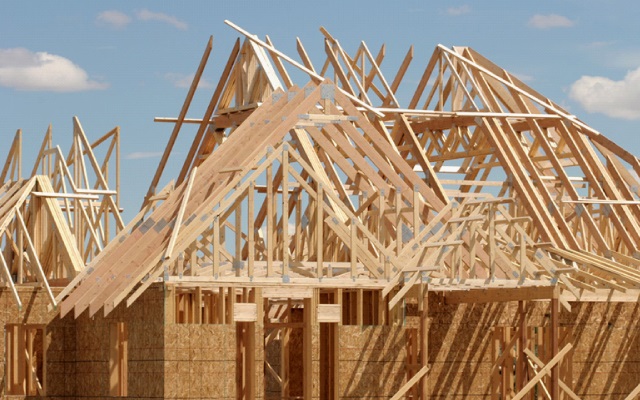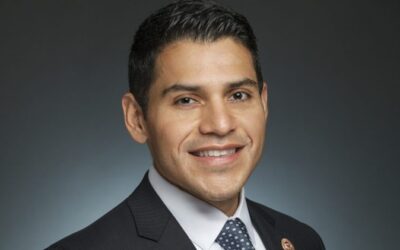By Daniel Stefanski |
As the temperature rises across Arizona, so does the interest in the future of water for the Grand Canyon State.
Last week, Democrat Governor Katie Hobbs held a press conference to announce the publication of the Phoenix Active Management Area Groundwater Model, which she described as a “sophisticated, peer reviewed tool that uses the best available science to access our aquifers.” Hobbs stated that the Arizona Department of Water Resources “produced a forecast, using this model that evaluates groundwater conditions for the Phoenix AMA over the next century as part of Arizona’s 100 year assured water supply program.” She highlighted that this Phoenix AMA Groundwater Model and the 100-year groundwater study “are critical tools to help us look into the future and proactively manage our water supplies.”
The first-year governor could not resist another criticism of her predecessor, Republican Doug Ducey, telling reporters that “this 100-year groundwater study expands and improves upon the Hassayampa Report, which had been withheld for years by the prior administration” – and unsealed by Hobbs during her State of the State address back in January.
Though the governor spent a good amount of time discussing Arizona’s secured standing when it comes to its groundwater supply, she made national headlines for her warning about the future of the state’s groundwater and her plan of action to deal with the findings. Hobbs said that the study’s results “show we need to take action once again;” and that if the state does nothing at this juncture, “we could face a 4% shortfall in groundwater supplies over the next 100 years.” She emphasized that “we have to close this gap and find efficiencies in our water use, manage our aquifers wisely, and increase our utilization of renewable supplies.”
Hobbs then announced a pause on “approvals of new assured water supply determinations that rely on pumping groundwater, ensuring that we don’t add to any future deficit.” She attempted to reassure Arizonans and industry leaders, saying that “this pause will not affect growth within any of our major cities, where robust water portfolios have been proven to cover current and future demands.”
Arizona Freshman Representative Austin Smith was closely following the governor’s comments at the press conference, telling AZ Free News, “the fact of the matter is that home builders (large and small) plus agriculture are extremely good stewards of the land and our water resources – specifically groundwater pumping when they use it. We can’t be beating the drum about a housing crisis, and then in the same beat, kneecap the housing industry. Very counterintuitive.”
Smith revealed that he had teamed with fellow freshman representative Alex Kolodin to “lead the charge to secure funding in this year’s budget to start brackish water projects and pilots,” adding, “(we) are working together to keep the economy moving, not pushing to kneecap industries or grow government – but also working for Arizona’s water future 20-30 years from now in brackish groundwater.”
Arizona Senator Sine Kerr, the chair of the chamber’s Natural Resources, Energy & Water Committee, also weighed in on the news from the Governor’s Office, stating, “This week, the Phoenix Active Management Area Groundwater Model and the Arizona Department of Water Resources released the results of a study of the groundwater supply in the Phoenix metropolitan area. The results show the Groundwater Management Act of 1980 is working as it should. The ADWR report projects 96% of 100-year assured water supply will be met. The remaining 4% of unmet demand over 100 years can be achieved through non-groundwater sources. The state has designated transport basins exclusively for filling these small gaps and because of our wise groundwater management, Arizona has water to sustain us now and in the future. I look forward to working with ADWR to improve accessibility to these plentiful in-state resources.”
Another Republican Leader at the state legislature, Representative Tim Dunn, shared his thoughts on the current and future state of Arizona’s groundwater, reminding Arizonans of the 1991 Arizona Groundwater Transportation Act, which “established Arizona’s plan for meeting unmet demand in the Assured Water Supply program,” setting “aside four groundwater basins, rich in groundwater resources to give urban areas a source of water they could withdraw from, 30 years in the future: the Harquahala, Butler Valley, McMullen, and Big Chino groundwater basins.” Dunn declared the purpose for the creation of these basins was “precisely so we could withdraw from them in moments like today,” calling the basins “Arizona’s water savings account.”
Dunn noted that “the transfer basins contain well above the 4.9 million acre-feet that the Phoenix AMA needs,” and that “Harquahala alone contains between 15 to 20 million acre-feet.” He encouraged state leaders to follow the plan set in motion with the Arizona Groundwater Transportation Act to “begin moving the water,” saying, “We are at an inflection point, but we are prepared.”
Senate President Warren Petersen also responded to the semantics about new housing developments, tweeting, “There is no need to stop homebuilding. Homes use the least amount of water. Meanwhile everything else can continue to be built? Commercial, industrial and apartment buildings that would use way more water but not residential houses? Doesn’t make any sense.”
Petersen retweeted a thread from the Arizona Commerce Authority’s Patrick Ptak, where Ptak cited a release from the City of Phoenix’s Water Services Department, which read, “While the results of the study are important for understanding the groundwater situation, it is crucial for Phoenix Water customers and stakeholders to know that the City’s water security remains unaffected. Groundwater plays a minimal role in Phoenix’s overall water usage, accounting for only 2% of the City’s total water usage each year. The remainder of Phoenix’s water supplies come from renewable resources, such as the Salt, Verde, and Colorado Rivers. Phoenix also reuses more than 95% of its reclaimed water.”
Democrat Attorney General Kris Mayes, who has made water issues one of the central focuses of her administration, opined on Hobbs’ announcement, calling for the Legislature, the Governor, and AWDR “to take aggressive and immediate action to expand this model beyond the Valley and conduct these studies in rural communities to protect water supplies throughout this state,” asserting that “groundwater studies have rarely – if ever – been conducted in rural Arizona.”
Daniel Stefanski is a reporter for AZ Free News. You can send him news tips using this link.








